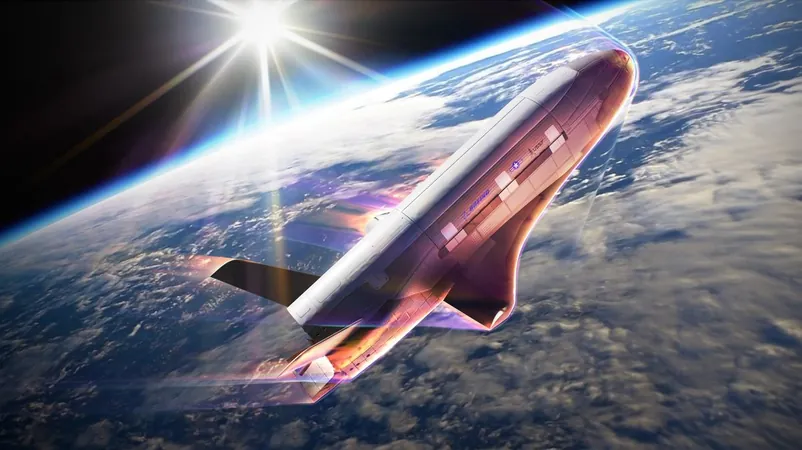
Space Force's Enigmatic X-37B Space Plane Set to Unveil Groundbreaking Aerobraking Maneuvers!
2024-10-11
Author: Siti
Introduction
The U.S. military's secretive X-37B space plane is ready to embark on a series of innovative aerobraking maneuvers, marking a significant advancement in its mission profile and signaling a new era of orbital experimentation.
Mission Overview
After launching on its seventh mission aboard a SpaceX Falcon Heavy rocket in December 2022, the robotic space plane entered a highly elliptical and classified orbit where it has been stationed for over 10 months. During this period, the X-37B has been engaged in a variety of projects, including radiation-effect experiments and the testing of emerging technologies in Space Domain Awareness. However, the forthcoming maneuvers will utilize Earth's atmosphere to strategically alter its orbital path.
Aerobraking Technique
The aerobraking technique involves utilizing the drag created by Earth's atmosphere to efficiently lower the X-37B's orbit from its current high Earth position, and importantly, this approach conserves fuel. "This efficient series of maneuvers exemplifies the Space Force's dedication to pioneering innovative solutions in our pursuit of national security missions in space," stated Frank Kendall, Secretary of the U.S. Air Force.
Historical Significance
This marks a historic moment, as it will be the X-37B's first endeavor with dynamic aerobraking maneuvers. According to Space Force officials, these tests are informed by the aircraft's previous missions and decades of accumulated knowledge from both lunar and Martian explorations conducted by the scientific community.
Expert Opinions
Gen. Chance Saltzman, Chief of Space Operations, underscored the significance of this milestone, remarking that these maneuvers showcase the United States Space Force's commitment to enhancing its capabilities in an increasingly complex domain.
Post-Maneuver Plans
Upon completion of the aerobraking operations, the X-37B is expected to shed its service module components into a lower orbital trajectory. This strategic move allows these components to remain in space for a considerably shorter duration, adhering to recognized standards aimed at mitigating space debris—a growing concern as humanity increasingly populates low Earth orbit with satellites and spacecraft.
Conclusion
After undergoing its testing and experimentation phase, the X-37B will proceed with a controlled deorbit and land, just as it has successfully done in its previous six missions. This cutting-edge maneuver is poised to redefine our understanding of space operations and showcase the innovative spirit propelling the Space Force into the future. Stay tuned as the revelations unfold!



 Brasil (PT)
Brasil (PT)
 Canada (EN)
Canada (EN)
 Chile (ES)
Chile (ES)
 España (ES)
España (ES)
 France (FR)
France (FR)
 Hong Kong (EN)
Hong Kong (EN)
 Italia (IT)
Italia (IT)
 日本 (JA)
日本 (JA)
 Magyarország (HU)
Magyarország (HU)
 Norge (NO)
Norge (NO)
 Polska (PL)
Polska (PL)
 Schweiz (DE)
Schweiz (DE)
 Singapore (EN)
Singapore (EN)
 Sverige (SV)
Sverige (SV)
 Suomi (FI)
Suomi (FI)
 Türkiye (TR)
Türkiye (TR)